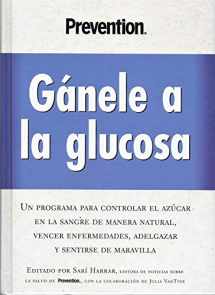
Ganele a la Glucosa: Un Programa Para Controlar El Azucar En La Sangre de Manera Natural, Vencer Enfermedades, Adelgazar y Sentirse de Maravilla (Spanish Edition)
Book details
Summary
Description
Translacion: Ganele to the Glucose: A Program To control Sugar In the Blood of Natural Way, To overcome Diseases, To become thin and To feel of Wonder ~~~ From Wikipedia: Glucose (/??lu?ko?s/ or /-ko?z/; C6H12O6, also known as D-glucose, dextrose, or grape sugar) is a simple sugar (monosaccharide) and an important carbohydrate in biology. Cells use it as the primary source of energy[1] and a metabolic intermediate. Glucose is one of the main products of photosynthesis and starts cellular respiration. ~~~ Glucose exists in several different structures, but all of these structures can be divided into two families of mirror-images (stereoisomers). Only one set of these isomers exists in nature, those derived from the "right-handed form" of glucose, denoted D-glucose. D-glucose is often referred to as dextrose. The term dextrose is derived from dextrorotatory glucose.[2] Solutions of dextrose rotate polarized light to the right. Starch and cellulose are polymers derived from the dehydration of D-glucose. The other stereoisomer, called L-glucose, is hardly ever found in nature. ~~~ The name "glucose" comes from the Greek word glukus (??????), meaning "sweet". The suffix "-ose" denotes a sugar. The name "dextrose" and the 'D-' prefix come from Latin dexter ("right"), referring to the handedness of the molecules. ~~~ Scientists can speculate on the reasons that glucose, and not another monosaccharide such as fructose, is so widely used in organisms. One reason might be that glucose has a lower tendency, relative to other hexose sugars, to react non-specifically with the amino groups of proteins. This reaction (glycation) reduces or destroys the function of many enzymes. The low rate of glycation is due to glucose's preference for the less reactive cyclic isomer. Nevertheless, many of the long-term complications of diabetes (e.g., blindness, renal failure, and peripheral neuropathy) are probably due to the glycation of proteins or lipids.[3]


We would LOVE it if you could help us and other readers by reviewing the book
Book review



